End Procrastination Now! (9 page)
Read End Procrastination Now! Online
Authors: William D. Knaus

TABLE 2.1
Questions Concerning Different Perspectives
Procrastination Perspective
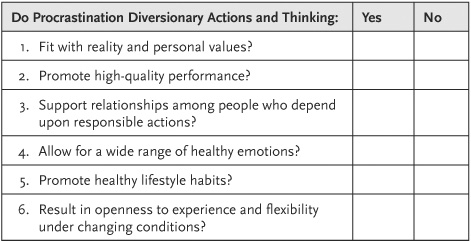
Do-It-Now Perspective
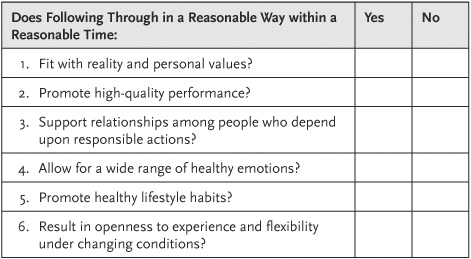
Whatever immediate relief Jane felt was followed by more pressured stress. She heard a nagging inner voice about the delay. She hated this messenger of stress, but felt that she was stuck with it.
When the deadline neared, Jane could delay no longer and still keep her job. She went into a panic mode. She made an eleventh-hour rush. She didn't make the deadline, excused her delay, and got an extension. She lamented that she could have done better had she started earlier. However, history repeated itself when she found herself in similar circumstances. Here is what she did to break this procrastination pattern through the ABCDE approach.
Jane's
A
was the impending deadline for her financial report. She thought of the report as complex and difficult. She was uncertain about where to begin, and so she scurried around the issue while hoping for inspiration. Jane had expectations of perfection, and her self-doubts partially resulted from her fear that she wasn't as capable as she thought she should be. She evaluated the project as threatening. She evaluated the tension she experienced as unbearable. Thus, her procrastination was complex.
It's normally unrealistic to handle all the ingredients that go into a complex procrastination pattern simultaneously. This is like trying to read a book while driving. So, Jane started by working through her tomorrow thinking using Ellis's ABCDE approach as her guide. She challenged herself to (1) isolate the later thinking that existed within her, (2) use a do-it-now perspective to introduce a rival belief into the process, and (3) control her impressions through working to develop a realistic outlook about the report.
In the ABC phase of this process, Jane mapped what was going on when she procrastinated. Once she had mapped the process, she was now in the catbird seat to take a close look at the validity of this phase of her thinking. That takes us to D.
Jane followed Epictetus' serenity approach, controlling impressions to generate a new effect. Because she wasn't initially familiar with the ABC approach, part of coming to grips with her procrastination thinking involved educating herself about the system. She
found that the best way to educate herself in its use was by direct application to her most pressing procrastination problem.
Table 2.2
gives Jane's resolution for the
later thinking
part of her procrastination habit.
Albert Ellis's rational emotive system includes active behavioral assignments. Thus, it fits well with a do-it-now philosophy to carry through. The behavioral assignments are a form of
exposure.
This is the gold standard for fighting and overcoming performance anxieties and fear and boosting self-confidence. You are less likely to procrastinate on your behavioral assignments to end procrastination if you genuinely see them as being within your ability to do and control, but you have to stretch a bit. Let's look at what Jane assigned herself as a step to prevent future procrastination on report writing. After she finished the report, Jane prepared herself for the next by addressing her high expectations, doubts, and discomfort-dodging tendencies. She set an early start date to ensure that she'd present a high-quality product. She set intermediate deadlines to help her keep momentum. She set an early deadline. When the next report came due, Jane's boss received it early.
END PROCRASTINATION NOW! TIP
Be Aware of Procrastination Thinking
1. Think about your thinking. Help yourself by labeling your procrastination thinking, as this act can provide a sense of controllability.
2. Introduce a change into the procrastination thinking process by disputing your later thinking.
3. Nip procrastination behavioral diversions in the bud by giving yourself a behavioral assignment for following through with a do-it-now initiative.
Keep a positive momentum by taking proactive coping steps.
TABLE 2.2
Jane's ABCDE Resolution
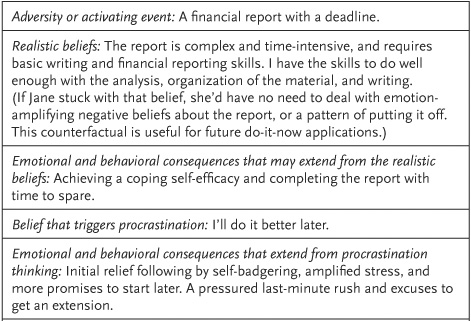
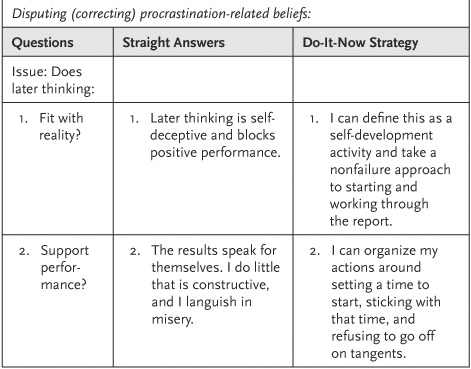
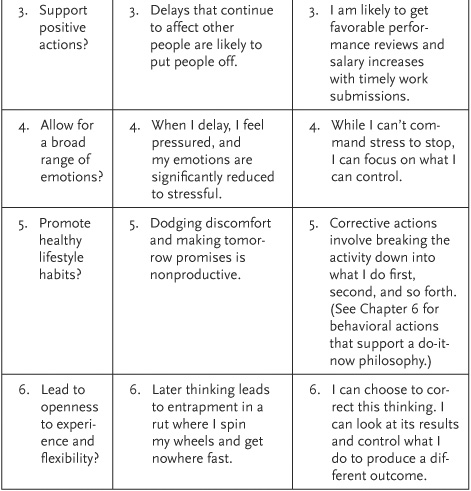
Through following the above approach, Jane established control over a negative procrastination process, and such control is positive. She also took action through proactive coping, which you learn more about in
Chapter 4
. She engaged in proactive coping when she prepared for the next report by working out her problems and planning action before the time to start. Proactive coping is designed to promote effectiveness and well-being. These results represent the new effects she gained through this exercise.
Now, it is your turn to use the ABCDE system (see
Table 2.3
).
TABLE 2.3
Your ABCDE Resolution
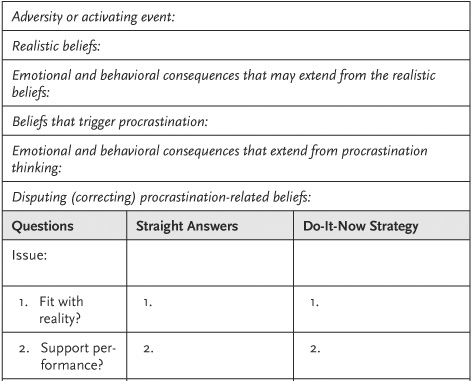
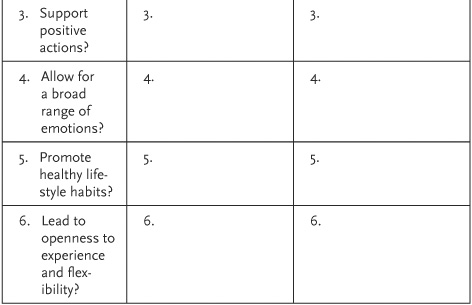
Effects: What positive new results did you produce for yourself through this exercise? __________________________
END PROCRASTINATION NOW! TIP
Few things in life are more important than your sense of command of yourself and over what you do. And when it comes to procrastination, you can control your thoughts, your emotions, and your actions.
Can you reduce procrastination thinking to ashes, and will this be permanent? Unfortunately, the procrastination phoenix will rise again and again unless you persist in directing your actions through guided thoughts and a positive emotional intent. The prescription is simple: simultaneously start and follow through on whatever your most timely activity may be, and then stick with actions to keep procrastination thinking in the background. You'll have many opportunities to practice this process.
